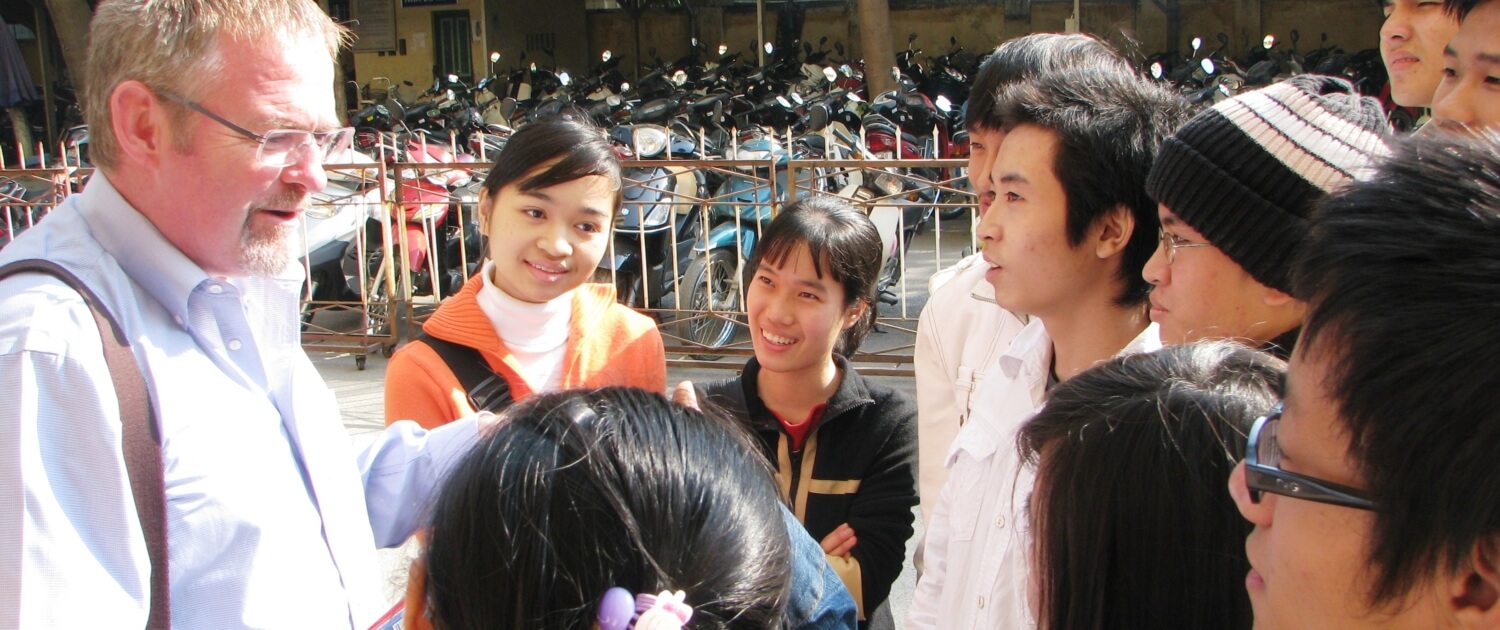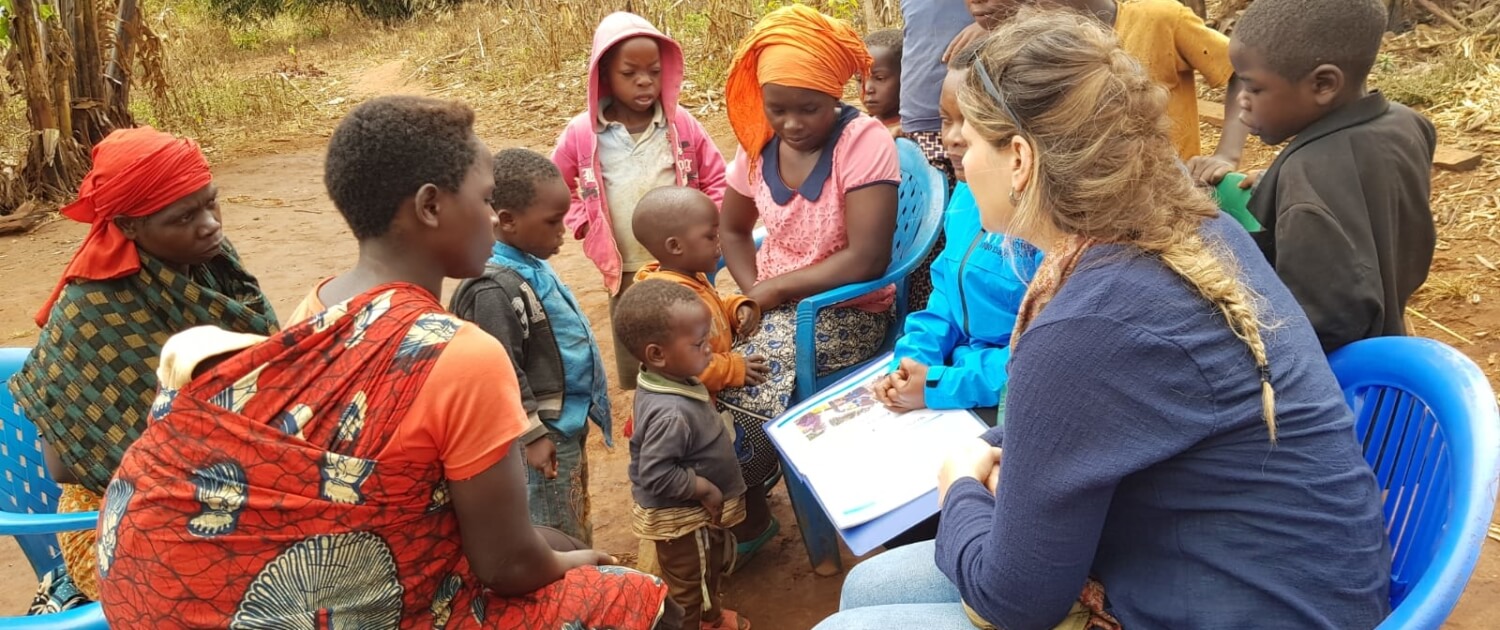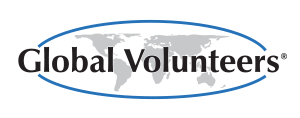The Ripple Effect of Short-Term Volunteers
Most volunteers are characteristically modest when estimating their personal impact in Global Volunteers’ partner communities. But when measuring the cumulative outcomes of service programs over time, we’ve demonstrated that the transformative power of volunteer teams – serving for one, two or three weeks at a time – is deep and wide. Sharing knowledge of those outcomes in their own communities exponentially expands the value of volunteers’ own impacts when they return home. These stories illustrate the “Ripple Effect” of average volunteers on Global Volunteers teams – and how you can amplify your own impact.
Forming Ripples to Advance Local Goals
Assessing progress toward desired targets in international development is always a challenge. When Global Volunteers talks about “helping children reach their full potential,” we refer to impacts in the areas of eliminating hunger, improving health and enhancing cognition. To accomplish this requires a steady stream of volunteers working with local people along with adequate funding for material resources. With these minimal requirements, each volunteer who teaches conversational English, takes blood pressures, feeds pre-schoolers, weeds a community farm, presents parent workshops or splits firewood can potentially benefit local people far beyond those they directly assist.

On a recent Tanzania service program, Volunteer Kathy Berryman wrote in the team journal:
“We see the profound impact the Reaching Children’s Potential Program (RCP) caregivers have in the communities. As we walked from home to home, the caregivers were greeted by members of the village. Everyone seemed to know them. They are clearly an integral part of the community and respected by all. They assess the status of the mothers and infants they are visiting and provide education about the pillars of the RCP Program – hygiene and nutrition and education. The mothers tell us that they talk to their friends and family about their home visits and what they have learned. We can see the ripple effect. The whole community is benefiting from the RCP Caregiver visits!”
What may not be evident to Kathy and other volunteers is how their own influence in the community likewise ripples through local people’s lives. Traveling hundreds and thousands of miles to work hand-in-hand with children and families, volunteers reinforce mothers’, fathers’ and children’s worth, says RCP Caregiver and Mental Health Education Manager Regina Mhagama. “Long after the volunteers depart, the mothers always talk about their influence on their lives. Volunteers raise their self-esteem and the confidence they can succeed,” she says, which then extends to family members, neighbors and friends through a chain reaction stimulating change within the community. The Social Ecological Model defined by Dr. Kenneth McLeroy in 1988 is an academic description of the power one influential individual or group – such as Global Volunteers – in a receptive community.

In Siedlce County, Poland, where volunteer teachers work in English classrooms and language camps, successive teams over 30 years are publicly credited by county officials for transforming youths’ capacity. Without this intervention, according to Global Volunteers Community Partner Marek Blaszczyk, the rural students who lacked access to English tutors wouldn’t have achieved English fluency, and their futures would look very different. Families say that students’ success extends to them as well. “Students who have benefited by meeting and learning from volunteers share their knowledge of English with their parents and younger siblings,” multiplying the impact, he explained. Former Siedlce Governor Karol Tchórzewski expanded, “I believe that even more important than the tangible results of Global Volunteers’ work in Poland with the large number of students are the benefits of their other forms of assistance- the friendships, the openness, the selflessness, the optimism. Each of the students, thanks to contact with volunteers, has become a different person, more open, more spontaneous, better.”
“Never doubt that a small group of thoughtful, committed citizens can change the world; indeed, it’s the only thing that ever has.”
– Margaret Mead
Even one volunteer working with one student can springboard a family’s progress. Global Volunteers Crete Community Partner and English Teacher Malamo “Tenia” Vigla cites an adult student, Maria, whom she paired with Global Volunteer Judy Nix at a critical time in Maria’s education. The two women became fast friends and Judy was impressed with Maria’s determination to obtain a new job and earn a better living. Maria was finishing her degree in vaccination and infection prevention.”Judy tutored her for two weeks and helped her to write a new resume and introduction letter. It changed Maria’s world,” Tenia said. And beyond that, Maria’s success changed her family’s world. Again, the ripple effect at work!
Dispatching Ripples Vast and Wide at Home
In an unconventional 2013 science report, the New York Times calculated that the average American knows about 600 people. Does that surprise you? Oxford evolutionary psychologist Robin Dunbar estimated “we have on average five intimate friends, 15 best friends, 50 good friends, 150 friends, 500 acquaintances and 1,500 people we recognise on sight” in defining the concentric circles of friendship. Most people “vastly underestimate the number of people they actually know,” says mathematician and author Joseph Mazur in his studies of chance and coincidence.
This phenomenon even spurred an MIT study of the “small world effect,” which concluded that “social influence exhibits the ripple effect, decaying across social distances from the source but persisting up to six degrees of separation.” But how many people are we talking about? If each of 20 friends, family, colleagues and others have a similar number of contacts, we’re connected to 400 people by two degrees of separation and 8,000 people by three degrees of separation.

Our vast spheres of influence means that in a year, our routine communications – whether digital or “in real life” – can ripple exponentially to multiples of thousands of people. And most of us never fully perceive our own influence among the people we know well. By sharing your Global Volunteers experience with others, you can greatly expand the impact of your service beyond conventional boundaries. For instance:
- First-time Global Volunteer Pam Ballard’s Facebook post about her upcoming service program in Poland to work with Ukrainian refugees inspired 15-year-old Michael Woodley’s donation of $700 from a $1,000 gift from his aunt to support the families his parents’ friend, Pam, would be serving.
- Alumnus John Taylor’s small “reply all” email mention of his service when declining a fraternity reunion to attend a co-occurring Global Volunteers board meeting sparked a $30,000 unrestricted donation in his honor by a generous fraternity brother.
- When Four-time St. Lucia Volunteer Karen Isaacs’ return to the island was suspended during the pandemic, her friends contributed $1,500 on Facebook to support the community. Karen initially was referred to Global Volunteers by Gila Cohen-Shaw, three-time volunteer who crowdsourced to serve in Tanzania.
- In a “triple ripple,” Alumnus Bob Appleby underwrote three service programs in Greece for his son, granddaughter and himself. Granddaughter Megan then shared her service story with schoolmate Cassidy Matz, who subsequently served in Greece and, because of the impact of teaching Greek teens, changed her college major, and became a fourth-grade teacher in 2021!
Employing the Exponential Effect of Ripples
When we consider the interrelated society that surrounds us, all our actions have the possibility to positively affect others far beyond ourselves. When we respond to others’ needs and dreams with intention, we contribute in the largest way possible with what we know, to greatest effect. This is the outward stream of ripples you start by sharing your own story.

Every referral, story, donation and other act of support is a “pebble in the pond,” generating concentric waves out from the center, and ultimately benefiting not only those we personally serve, but those who benefit from those we serve.
How far do our waves of impact extend? Each act of service in partner communities and in our own communities speaks to the deep and seemingly limitless inter-connections of our personal networks.
Not only is our influence wider than we had previously imagined, but the ultimate realization of how significant we can be leads to an appreciation of every opportunity to share what life has made meaningful to us.




Leave a Reply
Want to join the discussion?Feel free to contribute!